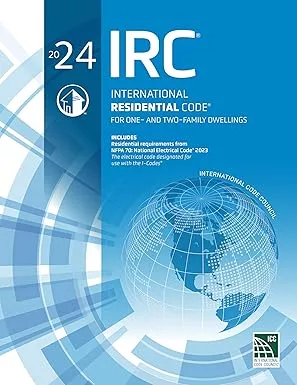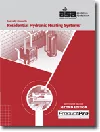Post-recessionary outlook for residential construction brighter
Although much of the ongoing residential construction continues to be supported by prolific apartment construction and suburban rural homes for rental or long-term leasing, the post-recessionary outlook seems to be getting brighter. At the same time, the automotive sector is returning to the record production years of the long stretch before the financial recession of 2008 - 2010.
With a record U.S. population of 320 million (third largest in the world) and double that of only 60 years ago, these one-time pillars of America’s demand economy seem to be returning to their previous pre-eminent position of America’s world-leading consumer expenditure status.
While the switch from homeowning will likely never return to becoming the key asset of middle-class households, the love affair with the automotive industry is in the process of reaching new records in the current decade. It’s estimated that 2014 automotive sales will reach 16.4 million, the best since 2007, the high point of the pre-recessionary period. In fact, car buyers are becoming much more diverse in their choices, going back to heavy SUVs, as well as the more cost-efficient small sedans.
The recent drop in gasoline prices has reignited the desire for automotive ownership, as have the low interest, long-term credit deals, fueled by not only domestic competition but from German, Japanese and South Korean automakers, who have developed a strong manufacturing base. Those are almost exclusively located in the right-to-work (nonunion) American states, primarily in the southeast part of the country.
As the U.S. economy churns slowly ahead, residential apartment construction is abetted by both recent college graduates and other members of the millennial generation that had previously chosen to live with their parents due to economic hardship. This also is abetted by the large number of additional immigrants (undocumented or conventional).
Whatever transpires in the political arena regarding immigration policies, both the number and diversity of America’s economically developed population growth will reach the 400 million mark within the current century.
Although both developing China and India have surpassed the one billion population level, the United States has far exceeded other first-world nations, primarily in Europe, in generating gross domestic product, technology acceleration, and natural resources and exports.
Household wealth at record levels
America’s combined wealth, which includes the net worth of U.S. households and nonprofit organizations — the value of homes, stocks and other assets, minus debts and liabilities — rose $1.4 trillion in the second quarter to $81.5 trillion. This was the highest record ever amassed in the United States or any other nation in modern history.
It is ironic, but understandable, that the pace of mortgage lending remained basically flat during this post-recession surge, while consumer credit, as a whole, advanced by 8.1%, inclusive of unabated student loans that have left more than a trillion dollars outstanding.
Although economic recovery since 2010 is moving forward at an abnormally slow pace, with stronger household finances and falling slow-paced unemployment, it is anticipated consumer spending will increase incrementally with successive future quarter-annual time periods. This will happen as consumers regain buying confidence. This is critical to even a moderate growth of America’s world-leading $17 trillion plus gross domestic product of goods and services, of which consumer spending represents two-thirds.
With overall mortgage debt at the lowest point in decades, replaced by leasing and renting, the credit-worthiness of the average household will be directed into a variety of consumption components. The unexpected bounce-back of automotive purchases is an outstanding example.
Another factor adding to consumer confidence is the reduction of outstanding debt, which had reached new highs just before the outbreak of the Great Recession. But on the negative side is the lack of overall wage increases, which stalled in the last six years due to a major surplus of nonworking employables, the increasing percentage of part-time jobs, and the disproportionate employment in retail sector openings that pay at the low end of the average annual wage.
Money velocity stagnates
Although the arcane term “money velocity” is rarely discussed, even among academic economists, it is critical to the strength of any economy rebounding from a jarring recession. It’s the speed with which money is spent as the U.S. economy, for instance, attempts to reverse focus on debt reduction, discretionary spending and tends to retain its liquid monetary assets in the aftermath of the recessionary shock.
Almost five years after the Great Recession officially terminated, $11 trillion has been accumulated in bank accounts, plus whatever cash is held privately. However, the acceleration of spending has never moved more slowly since such records were first kept in 1959.
According to economic statisticians, the number of times this huge hoard of money moved through various spending stages amounted to only 1.5 times in the past year. This is down from two times in a relatively slow 2006 and an all-time high of 2.5 times in 1997.
That is one of the reasons why the Federal Reserve Board initiated its quantitative easings (QEs 1, 2 and 3) to lubricate the economy, after even a near zero federal funds rate did little to stimulate economic activity, especially in U.S. domestic markets. This stasis was magnified by the slow rate of employment growth, increasing excess surplus of employables, an overload of natural resources — fossil fuels and agricultural products — and a vast array of commodities. This occurred despite the continuing growth of America’s population expansion.
Whereas the Federal Reserve Board’s huge artificial injection of money supply, which overloaded its balance sheet from $1 trillion to more than $4 trillion during the post-recession, inflationary fears never materialized, maintaining the Producer Price Index and the Consumer Price Index below a 2% growth during this extended time period.
With the Fed’s unprecedented injection of $3 trillion dollars into the U.S.’s available money supply, it is hoped that growing consumer confidence, as well as creeping employment growth and wage increases, would result in a more normal pace of monetary expenditures.
An endangered species?
Back in the post-World War II years, when America was in a breakout mode through domestic economic expansion and foreign policy power, a short-lived popular song, “Take this Job and Shove It,” was widely denounced as anti-business, left-wing propaganda.
Fast-forward to the current era, as the U.S. Bureau of Labor Statistics reveals that more than 40% of the prospective U.S. working population is receiving some type of government stipend, ranging from disability payments and unemployment compensation to social security, Medicaid and other benefits made available. The BLS indicates the labor force participation rate is consistently hanging on at the lowest monthly level since the minimal 1978 hyper-inflation level (with June and July 2014 at 62.8% and 62.9%, respectively.)
In a comprehensive study of trends in the workforce released in December 2013, the BLS said it expects a further decline in labor force participation to 61% or lower by the end of the decade.
While much of the blame for this trend is attributed to “worker-eliminating” technology, the Congressional Budget Office projects that the Affordable Care Act could reduce the labor force by the equivalent of more than two trillion full-time workers now benefitting from employer-paid health benefits.
The BLS compounds this pessimism by citing that millions of workers have dropped out of the actual and potential labor force, as indicated by the unprecedented expansion of disability filings.
While these somber statistics reveal a good part of this disturbing trend, little is said about the degeneration of the work ethic attitude, which has always been the driving force behind America’s independent business expansion. That sector is still the dominant source of overall U.S. employment.
What is particularly disturbing is that the 25- to 54-year-old age group, which has consistently driven the historically dominant U.S. economic expansion, has increasingly fallen prey to the spreading “work ethic disrespect.”
As American Enterprise Institute senior fellow Charles Murray bitterly observed, “There were periods in the past that healthy men in the prime of life not seeking work were scorned as slackers.”
The big question that only the future will answer is whether the current trend is irreversible.
HELPFUL LINKS:
Looking for a reprint of this article?
From high-res PDFs to custom plaques, order your copy today!






